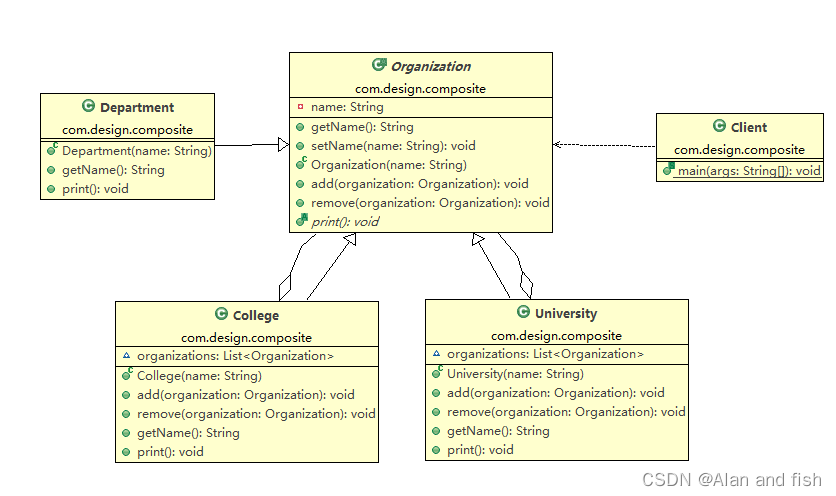- 内容:将对象组合成树形结构以表示“部分-整体”的层次结构。组合模式使得用户对单个对象和组合对象的使用具有一致性。
- 角色:
- 抽象组建(component)
- 叶子组建(Leaf)
- 复合组建(Composite)
- 客户端 (Client)
- UML 图

- 举个例子
需求:需要创建一个图形,由点,线组成,然后将两个点线组合图再组合成一个新的图形。
from abc import ABCMeta, abstractmethod
class Graphic(metaclass=ABCMeta):@abstractmethoddef draw(self):pass
class Point(Graphic):def __init__(self, x, y):self.x = xself.y = ydef __str__(self):return "点(%s,%s)" % (self.x, self.y)def draw(self):print(str(self))class Line(Graphic):def __init__(self, p1, p2):self.p1 = p1self.p2 = p2def __str__(self):return "线段[%s,%s]" % (self.p1, self.p2)def draw(self):print(str(self))
class Picture(Graphic):def __init__(self, iterable):self.children = []for g in iterable:self.add(g)def add(self, graphic):self.children.append(graphic)def draw(self):print("----------复合图形----------")for g in self.children:g.draw()print("----------复合图形----------")p1 = Point(2, 3)
l1 = Line(Point(3, 4), Point(6, 7))
l2 = Line(Point(1, 5), Point(2, 8))
pic1 = Picture([p1, l1, l2])p2 = Point(4, 2)
l3 = Line(Point(1, 4), Point(2, 5))
l4 = Line(Point(3, 5), Point(1, 8))
pic2 = Picture([p2, l3, l4])pic=Picture([pic1,pic2])
pic.draw()
- 适用场景:
- 表示对象的“部分-整体”层次结构(特别是结构是递归的)
- 希望用户忽略组合对对象与单个对象的不同,用户统一地使用组合结构中的所有对象
- 优点:
- 定义了包含基本对象和组合对象的类层次结构
- 简化客户端代码,即客户端可以一致地使用组合对象和单个对象
- 更容易增加新类型的组件

